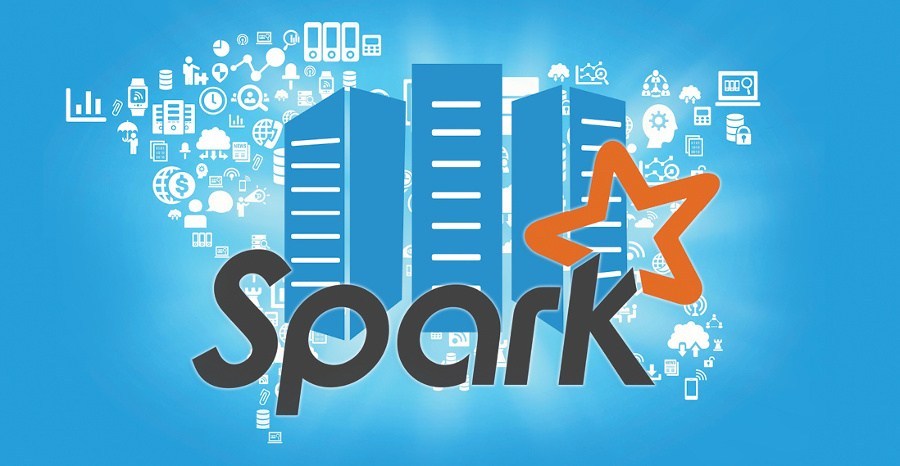Apache Spark is one of the most popular open source tools for big data. Learn how to use it to ingest data from a remote MongoDB server.
Cloudera Data Flow, the answer to all your real-time streaming data problems. Manage your data from edge to enterprise with a no-code approach to developing sophisticated streaming applications easily. Learn more today.
1. Download and Extract Spark
$ wget http://apache.spinellicreations.com/spark/spark-2.4.0/spark-2.4.0-bin-hadoop2.7.tgz $ tar -xf spark-2.4.0-bin-hadoop2.7.tgz $ cd spark-2.4.0-bin-hadoop2.7
Create a spark-defaults.conf file by copying spark-defaults.conf.template in conf/.
Add the below line to the conf file.
spark.debug.maxToStringFields=1000
2. Connect to Mongo via a Remote Server
We use the MongoDB Spark Connector.
First, make sure the Mongo instance in the remote server has the bindIp set to the appropriate value and the correct local IP (not just localhost). Use the authentication root and password below to indicate the credentials of your authenticated Mongo database. 192.168.1.32 is your remote server’s private IP (i.e., the server where Mongo is running). We are reading the oplog.rs collection in the local database. Change these accordingly. Similarly, we are writing the outputs to the database, sparkoutput.
spark-2.4.0-bin-hadoop2.7]$ ./bin/pyspark --conf "spark.mongodb.input.uri=mongodb://root:password@192.168.1.32:27017/local.oplog.rs?readPreference=primaryPreferred" --conf "spark.mongodb.output.uri=mongodb://root:password@192.168.1.32:27017/sparkoutput" --packages org.mongodb.spark:mongo-spark-connector_2.11:2.4.0 Python 2.7.5 (default, Oct 30 2018, 23:45:53)[GCC 4.8.5 20150623 (Red Hat 4.8.5-36)] on linux2
Type “help”, “copyright”, “credits” or “license” for more information.
Ivy Default Cache set to: /home/pkathi2/.ivy2/cache
The jars for the packages stored in: /home/pkathi2/.ivy2/jars
:: loading settings :: url = jar:file:/home/pkathi2/spark-2.4.0-bin-hadoop2.7/jars/ivy-2.4.0.jar!/org/apache/ivy/core/settings/ivysettings.xml
org.mongodb.spark#mongo-spark-connector_2.11 added as a dependency
:: resolving dependencies :: org.apache.spark#spark-submit-parent-33a37e02-1a24-498d-9217-e7025eeebd10;1.0
confs: [default]
found org.mongodb.spark#mongo-spark-connector_2.11;2.4.0 in central
found org.mongodb#mongo-java-driver;3.9.0 in central
:: resolution report :: resolve 256ms :: artifacts dl 5ms
:: modules in use:
org.mongodb#mongo-java-driver;3.9.0 from central in [default]
org.mongodb.spark#mongo-spark-connector_2.11;2.4.0 from central in [default]
| | modules || artifacts |
| conf | number| search|dwnlded|evicted|| number|dwnlded|
| default | 2 | 0 | 0 | 0 || 2 | 0 |
:: retrieving :: org.apache.spark#spark-submit-parent-33a37e02-1a24-498d-9217-e7025eeebd10
confs: [default]
0 artifacts copied, 2 already retrieved (0kB/6ms)
WARN NativeCodeLoader: This message means the systme is unable to load native-hadoop library for your platform… using built-in Java classes where applicable.
Set the default log level to “WARN”.
To adjust logging level, use sc.setLogLevel(newLevel). For SparkR, use setLogLevel(newLevel).
Welcome to
/ / ___ ___/ /
\ / _ / _ `/ __/ '/
/__ / .__/_,// /_/_\ version 2.4.0
/_/
Using Python version 2.7.5
SparkSession is available as ‘spark’.
>>> from pyspark.sql import SparkSession>>> my_spark = SparkSession
… .builder
… .appName(“myApp”)
… .config(“spark.mongodb.input.uri”, “mongodb://root:password@192.168.1.32:27017/local.oplog.rs?authSource=admin”)
… .config(“spark.mongodb.output.uri”, “mongodb://root:password@192.168.1.32:27017/sparkoutput?authSource=admin”)
… .getOrCreate()
Make sure you are using the correct authentication source (i.e., where you authenticate yourself in the Mongo server).
3. Perform Queries on the Mongo Collection
Now you can perform queries on your remote Mongo collection through the Spark instance. For example, the below query finds the schema from the collection.
>>> df = spark.read.format(“com.mongodb.spark.sql.DefaultSource”).load()
>>> df.printSchema()
root
|-- h: long (nullable = true)
|-- ns: string (nullable = true)
|-- o: struct (nullable = true)
| |-- $set: struct (nullable = true)
| | |-- lastUse: timestamp (nullable = true)
| |-- $v: integer (nullable = true)
Originally published by Pradeeban Kathiravelu at https://dzone.com
Learn more
☞ The Complete Developers Guide to MongoDB
☞ Master MongoDB, the NOSQL leader with Clarity and Confidence
☞ MongoDB, NoSQL & Node: Mongoose, Azure & Database Management
☞ Build a ChatApp with: (Nodejs,Socketio, Expressjs ,MongoDB)
☞ GraphQL: Learning GraphQL with Node.Js
☞ Apache Spark 2.0 with Scala - Hands On with Big Data!
☞ Taming Big Data with Apache Spark and Python - Hands On!
☞ Apache Spark with Scala - Learn Spark from a Big Data Guru
☞ Apache Spark Hands on Specialization for Big Data Analytics
#apache-spark #mongodb
